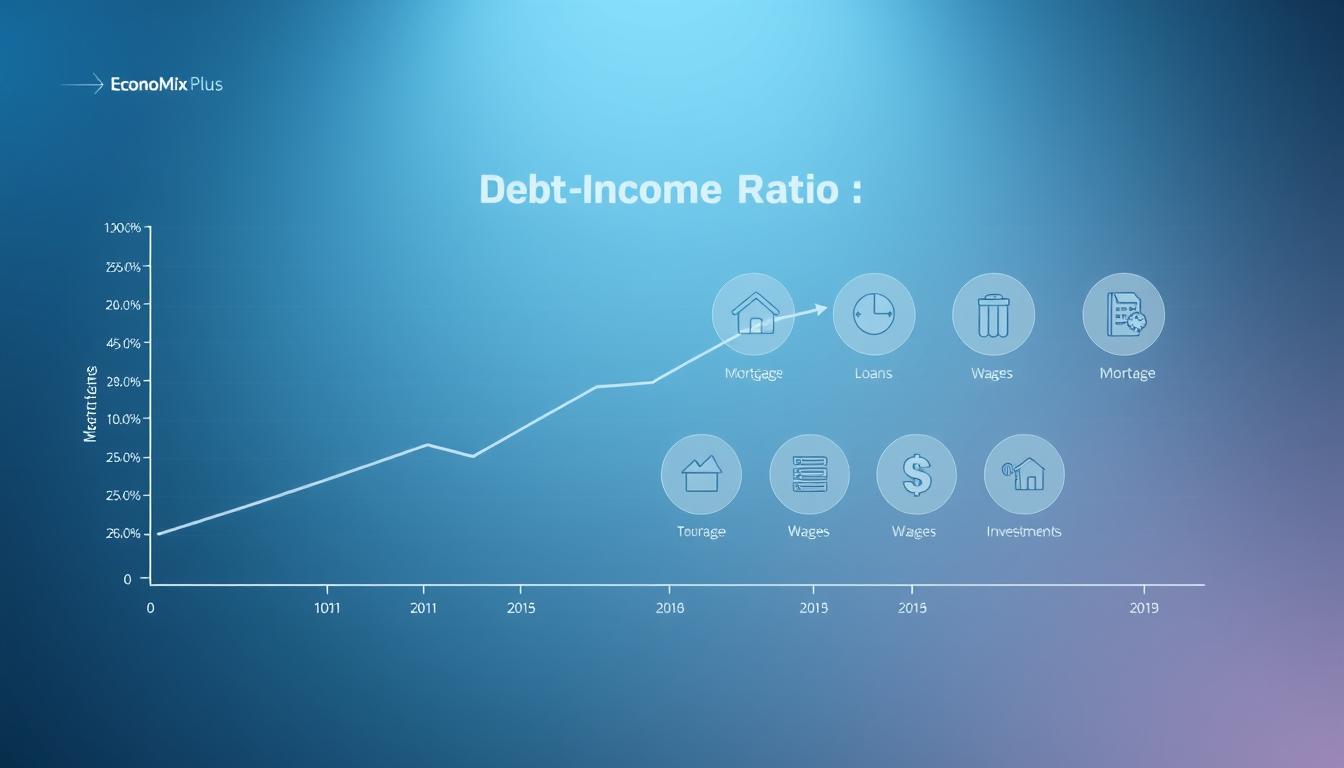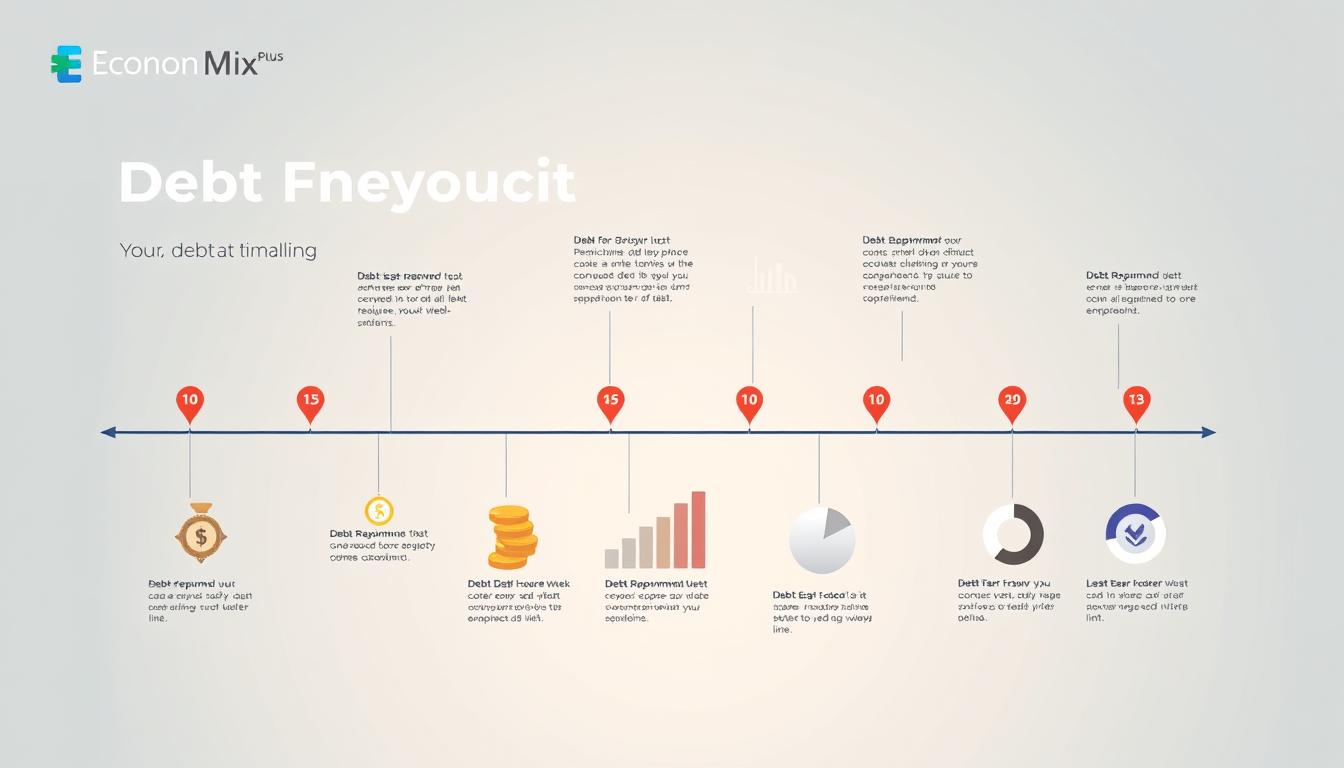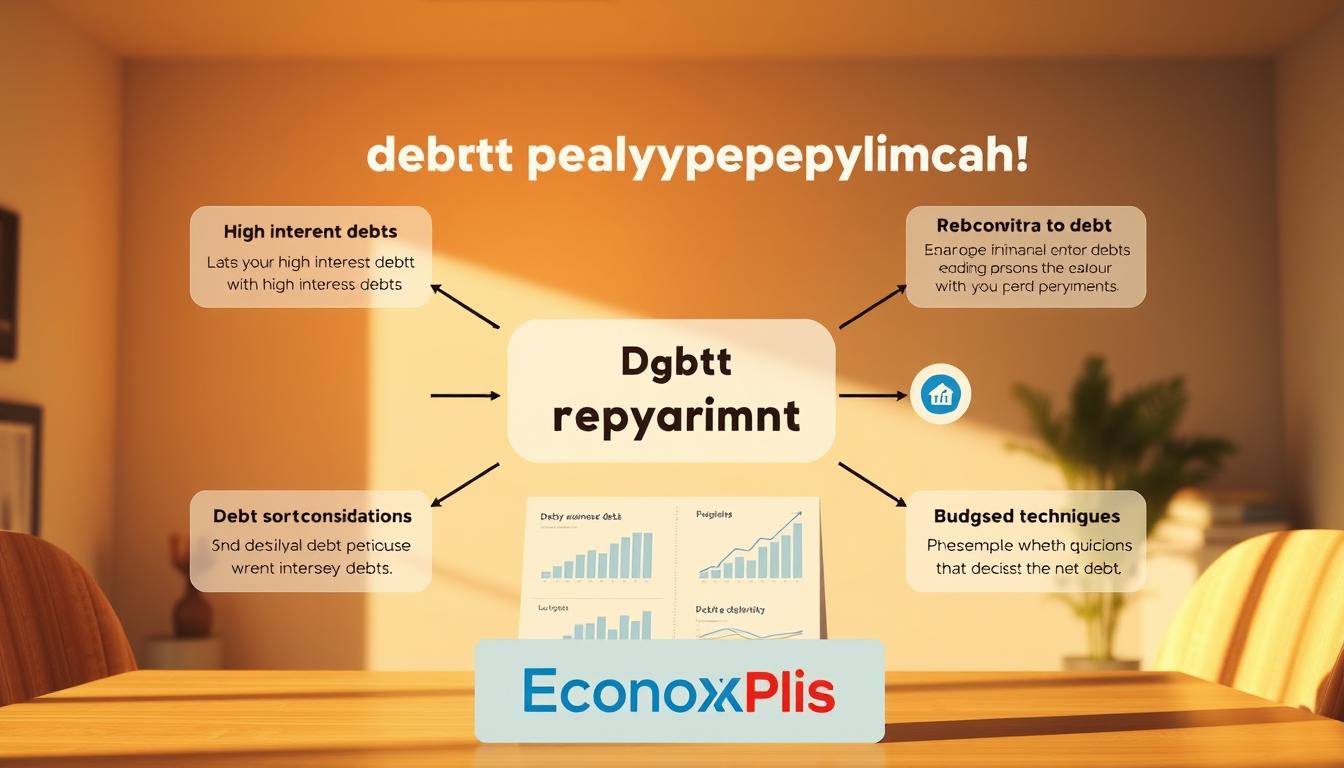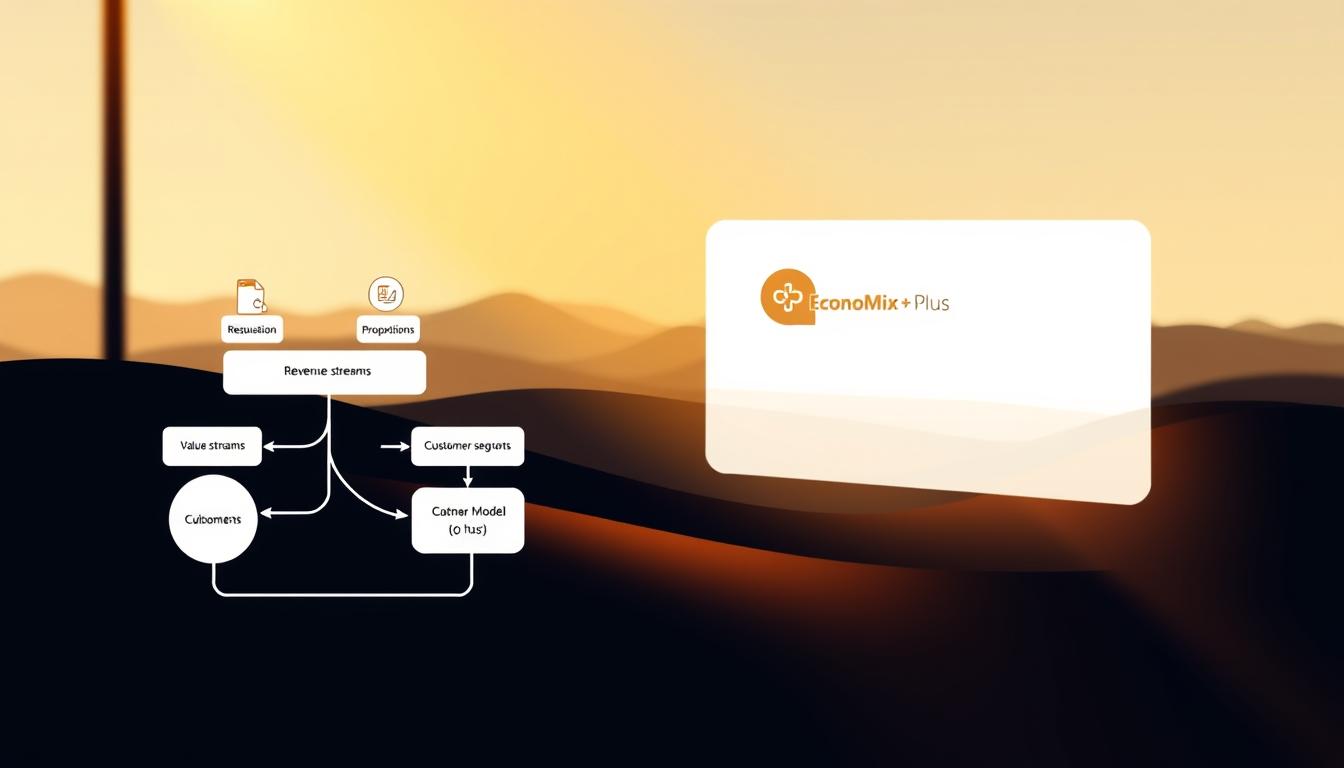Managing multiple financial obligations while paying off debt can be overwhelming. Many Americans face this challenge daily, feeling the weight of financial stress. However, it’s possible to pay off debt while maintaining financial stability with the right strategy.
Creating a personalized financial plan is crucial. It helps you prioritize your financial priorities, make timely payments, and work towards improving your credit score. By doing so, you can reduce financial stress and move towards long-term financial freedom.
Key Takeaways
- Understand your current financial situation to make informed decisions.
- Create a budget that allocates your income effectively towards debt and other financial goals.
- Choose a suitable debt repayment method that fits your financial situation.
- Prioritize your financial goals to achieve stability and reduce stress.
- Monitor your progress and adjust your plan as needed.
Understanding Your Current Financial Situation
Understanding your financial situation is crucial for making informed decisions about debt repayment. To effectively manage your debt, you need to have a clear picture of your financial standing.
Creating a Complete List of Your Debts
Start by making a comprehensive list of all your debts, including credit cards, loans, and other financial obligations. Note the balance, interest rate, and minimum payment for each debt. This will help you understand the scope of your debt and prioritize your payments. For more information on managing debt, you can visit this resource.
Analyzing Your Income and Expenses
Next, analyze your income and expenses to understand where your money is going. Create a budget that accounts for all your necessary expenses, savings, and debt payments. There are various budgeting approaches; choose one that works best for your financial situation.
Calculating Your Debt-to-Income Ratio
Your debt-to-income (DTI) ratio is a critical indicator of your financial health. To calculate it, divide your total monthly debt payments by your gross monthly income. For instance, if your monthly debt payments are $2,000 and your gross monthly income is $6,000, your DTI ratio is 33.3%. A DTI ratio under 36% is generally considered healthy, while a ratio over 43% is concerning.
Understanding your DTI ratio is essential because lenders use it to determine your creditworthiness. A lower DTI ratio can improve your chances of qualifying for mortgages or other loans. Tracking your DTI over time can also show your progress in debt reduction efforts.
To improve your DTI, focus on both reducing your debt and increasing your income. Strategies might include paying off high-interest debts first, consolidating debts, or taking on additional work. By understanding and managing your DTI, you can create realistic expectations about your debt payoff timeline and achieve financial stability.

- Calculate your DTI ratio regularly to track your progress.
- Adjust your budget to allocate more funds towards debt repayment.
- Consider ways to increase your income to improve your DTI ratio.
By following these steps, you can gain a clearer understanding of your financial situation and make informed decisions to achieve financial stability.
Establishing Your Financial Foundation First
Establishing a strong financial footing is vital when trying to pay off personal debts without compromising your financial health. This foundational step ensures that you’re not only addressing your current debts but also securing your financial future.
Making Minimum Payments on All Debts
When dealing with multiple debts, it’s essential to make at least the minimum payments on all of them to avoid late fees and negative credit reporting. This approach helps you maintain a good credit score while you focus on paying off your debts. By making minimum payments, you’re taking a proactive step towards managing your debts effectively.
Building a Small Cash Buffer for Emergencies
Having a small cash buffer is crucial for handling unexpected expenses, thereby preventing you from going further into debt. Aim to save $1,000 or one month’s worth of expenses, whichever is greater, in an easily accessible savings account. This fund acts as a financial cushion, reducing the need to take on additional debt when unexpected expenses arise.

Taking Advantage of Employer Retirement Matching
Contributing enough to your 401(k) or other workplace retirement plans to capture the full employer match is essentially capturing “free money.” This immediate return on investment can significantly boost your long-term financial security. For instance, if your employer matches 5% of your contributions, contributing at least 5% of your income is a smart financial strategy. It’s a balanced approach that allows you to save for retirement while paying off your debts.
As Suze Orman once said, “People first, then money, then things.” Prioritizing your financial foundation by making minimum debt payments, building an emergency fund, and leveraging employer retirement matching is a comprehensive strategy to manage your debts and secure your financial future.
By adopting this multi-faceted approach, you’re not only addressing your immediate financial concerns but also laying the groundwork for long-term financial stability. It’s about creating a plan that balances debt repayment with saving for the future, ensuring that you’re making progress on both fronts.
How can you smartly set financial priorities while paying off personal debts
To effectively manage your debt, you need to prioritize your financial goals. This involves making conscious decisions about how you allocate your income towards debt repayment and other financial obligations.
The 50/30/20 Budgeting Rule
A simple yet effective way to set financial priorities is by using the 50/30/20 budgeting rule. Allocate 50% of your income towards essential expenses like rent, utilities, and groceries. Use 30% for non-essential spending, and commit 20% towards saving and debt repayment. This rule helps you strike a balance between enjoying your life today and securing your financial future.
Identifying Essential vs. Non-Essential Expenses
To apply the 50/30/20 rule effectively, you need to distinguish between essential and non-essential expenses. Essential expenses are those that are necessary for living, such as housing, food, and healthcare. Non-essential expenses, on the other hand, include entertainment, hobbies, and lifestyle upgrades. By categorizing your expenses, you can identify areas where you can cut back and allocate more funds towards debt repayment.
Creating a Realistic Debt Repayment Timeline
To create a debt repayment plan, start by assessing your debts and income. Use a debt repayment calculator, like the one provided by Credit Karma, to determine how much you need to pay each month to clear your debt within a specific timeframe. For instance, you can calculate the monthly payment required to pay off your credit card debt in one year. By doing this for each debt and summing up the monthly totals, you can create a realistic debt repayment timeline that fits within your budget.

It’s also important to celebrate your progress along the way and be prepared to adjust your timeline if circumstances change. By having a clear plan and sticking to it, you’ll be on track to achieving financial freedom.
Choosing the Right Debt Repayment Strategy
Understanding the different debt repayment strategies available can help you make an informed decision about how to tackle your debt. With multiple debts to manage, selecting the most effective approach can be overwhelming, but it’s a crucial step towards achieving financial freedom.
The Debt Avalanche Method: Tackling High-Interest Debt First
The Debt Avalanche method involves paying off debts with the highest interest rates first, while making minimum payments on other debts. This approach can save you the most money in interest over time. By prioritizing high-interest debts, you can efficiently reduce the total amount you owe. For instance, if you have a credit card with an 18% interest rate and a personal loan with a 6% interest rate, you would focus on paying off the credit card balance first.
Key benefits of the Debt Avalanche method include:
- Saving money on interest payments over time
- Reducing the total amount owed more efficiently
- Focusing on high-priority debts based on interest rates
The Debt Snowball Method: Building Momentum with Small Wins
The Debt Snowball method, on the other hand, involves paying off debts with the smallest balances first, regardless of the interest rate. This approach provides a psychological boost as you quickly eliminate smaller debts and see progress. By paying off smaller debts first, you can build momentum and stay motivated throughout the debt repayment process.
Advantages of the Debt Snowball method:
- Quick wins to keep you motivated
- Simplifying your finances by eliminating smaller debts
- Building confidence as you achieve milestones
When to Use Each Strategy Based on Your Situation
The choice between the Debt Avalanche and Debt Snowball methods depends on your individual financial situation and personal preferences. If you’re motivated by saving money and are disciplined in your approach, the Debt Avalanche method might be the better choice. However, if you need the psychological boost of quick wins, the Debt Snowball method could be more effective for you.
Consider your financial circumstances and personality when deciding between these two strategies. You may also explore hybrid approaches that combine elements of both methods. Ultimately, the best strategy is one that you can stick to consistently.

Balancing Debt Repayment with Saving Goals
Managing your finances effectively requires a delicate balance between debt repayment and saving for the future. As you work towards becoming debt-free, it’s equally important to build a safety net and achieve your long-term financial goals.
Expanding Your Emergency Fund While Paying Down Debt
Having an emergency fund in place can prevent you from going further into debt when unexpected expenses arise. Aim to save $1,000 or three to six months’ worth of expenses. You can start by allocating a small amount each month, even as you make minimum payments on your debts.
Setting Realistic Saving Targets
Setting achievable saving targets is crucial. Consider your income, expenses, and debt obligations when determining how much you can realistically save. You might start with a modest goal, such as saving 1% to 3% of your income, and gradually increase it over time. Automating your savings can help make this process smoother.
Automating Your Finances for Success
Automating your payments and savings can significantly simplify your financial management. By setting up automatic transfers for both minimum debt payments and savings, you can ensure consistent progress without having to think about it. Utilize tools and apps that can help you track your progress and stay on course. For instance, you can automate your finances by setting up automatic transfers immediately after payday, ensuring that you prioritize both debt repayment and savings.

By automating your finances, you remove the emotional and willpower barriers to consistent debt repayment and saving. This “set it and forget it” approach reduces decision fatigue and ensures you’re making progress towards your financial goals. Regularly monitoring your automated systems will help you stay on track and make adjustments as needed.
Overcoming Common Obstacles in Your Debt Payoff Journey
Staying committed to your debt repayment goals requires resilience and the ability to overcome unexpected challenges. As you work towards becoming debt-free, you’ll likely encounter several obstacles that can potentially derail your progress.
Dealing with Unexpected Expenses
Unexpected expenses can significantly impact your debt repayment progress. To mitigate this, it’s essential to maintain a small cash buffer for emergencies. When unexpected expenses arise, you can use this buffer to cover them without going further into debt.
Avoiding the Emotional Spending Cycle
Emotional spending can be a significant obstacle to debt repayment. It’s crucial to identify your emotional triggers and develop healthier coping mechanisms. By doing so, you can avoid unnecessary expenses and stay focused on your debt repayment goals.
Negotiating with Creditors to Reduce Interest Rates
Negotiating with creditors can be an effective way to reduce your interest rates and save money on your debt. When calling your credit card company, be prepared to explain your situation and highlight your payment history. You might say, “I’ve been a loyal customer, making timely payments for the past few years, and I’m facing financial difficulties. I’m considering transferring my balance to a lower-interest card if we can’t come to an agreement.” Credit card companies often want to keep you as a customer and may be willing to reduce your APR.
Reducing your interest rate can make a significant difference in your debt repayment journey. For instance, if you have a student loan, consider refinancing with a lender like SoFi to potentially lower your interest rate. Even a small reduction in interest rates can save you a substantial amount of money over the life of your debt.
Conclusion: Maintaining Financial Balance for Long-Term Success
Maintaining financial stability during debt repayment is a marathon that demands consistent effort and strategic planning. To achieve this balance, you’ve learned various strategies to prioritize your financial goals while paying off debts, such as the 50/30/20 budgeting rule and choosing between the debt avalanche and debt snowball methods.
Celebrating milestones along your debt payoff journey is crucial for maintaining motivation. As you progress, you’ll need to transition your financial priorities, potentially increasing retirement contributions or saving for major purchases like a mortgage. It’s also vital to avoid future debt through preventive financial planning and regularly reassessing your financial priorities as life circumstances change.
Achieving debt freedom while maintaining financial stability lays the foundation for long-term wealth building and financial security. Start implementing these strategies immediately, even in small steps. Remember, financial balance is unique to everyone; the key is creating a sustainable approach that works for you. By doing so, you’ll be on the path to a more secure financial future, having effectively managed your debt and positioned yourself for success.














